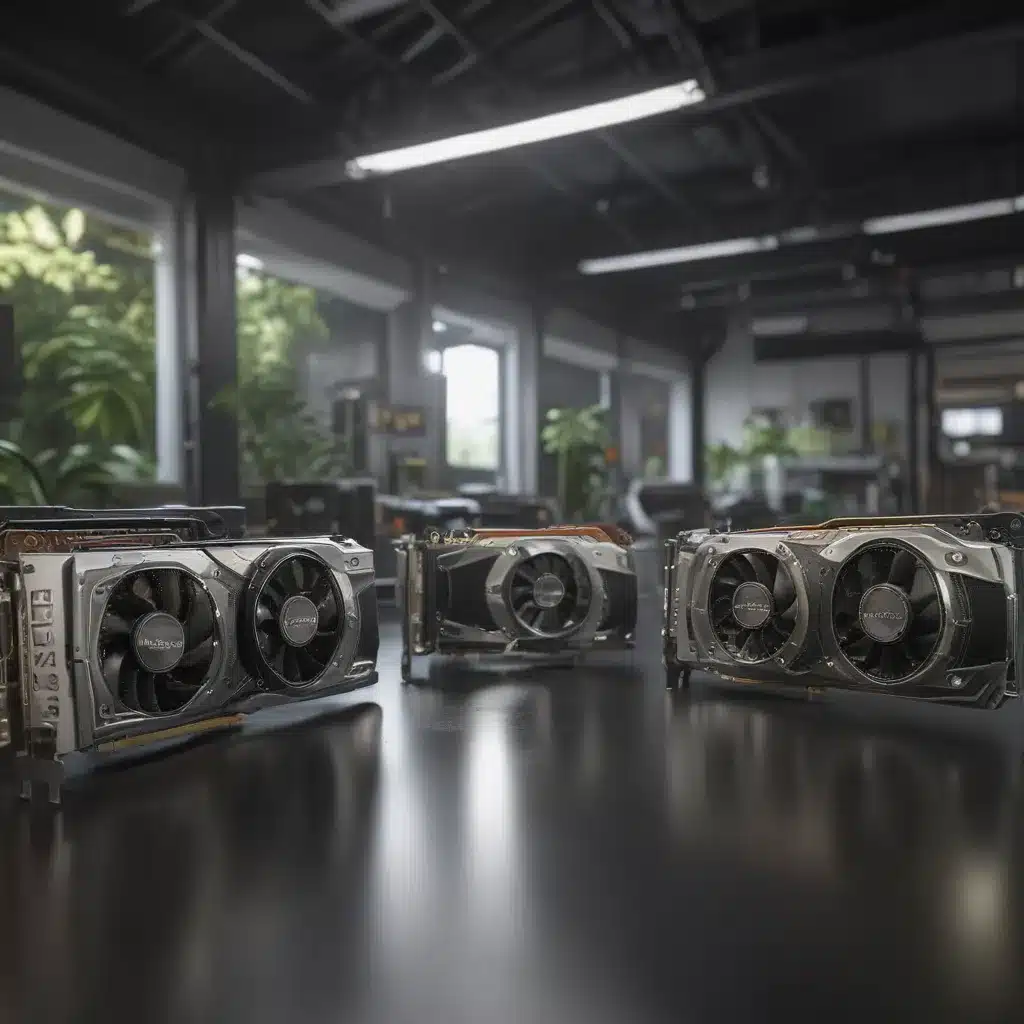The Eternal Struggle
If there’s one thing that’s constant in the world of PC gaming, it’s the relentless battle between NVIDIA and AMD. These two graphics powerhouses have been duking it out in the ultimate showdown for GPU dominance – and when it comes to ray tracing performance, the stakes have never been higher.
As a self-proclaimed PC enthusiast, I’ve had a front-row seat to this technological slugfest. I’ve seen the highs and lows, the triumphs and the tribulations, and through it all, I’ve come to one inescapable conclusion: NVIDIA has a definitive edge when it comes to ray tracing capabilities. [1]
Now, before you AMD loyalists start sharpening your pitchforks, hear me out. I know that Team Red has been making some impressive strides in recent years, but the simple fact is that NVIDIA’s ray tracing hardware and software solutions are just a cut above the rest. [2]
NVIDIA’s Ray Tracing Dominance
When NVIDIA first introduced their RTX line of GPUs back in 2018, they didn’t just dip their toes into the ray tracing waters – they cannonballed in headfirst. Their Turing architecture came equipped with dedicated ray tracing cores, and the company has continued to refine and improve this technology with each subsequent generation. [3]
The result? NVIDIA’s ray tracing performance is simply unparalleled. Their latest RTX 40 series GPUs, powered by the Ampere architecture, take things to a whole new level. With features like DLSS 3 – which uses AI-powered frame generation to effectively double the frame rate – NVIDIA has cemented its position as the go-to choice for gamers who demand the absolute best in ray tracing visuals and performance. [4]
It’s not just the raw power, either. NVIDIA’s software ecosystem, including tools like DLSS and Optix, have become integral parts of the ray tracing experience. Developers have flocked to these technologies, optimizing their games to take full advantage of NVIDIA’s ray tracing prowess. [5]
AMD’s Catching Up, but Still Trailing
Now, I know what you’re thinking: “But what about AMD? Aren’t they making strides in the ray tracing department?” And the answer is, well, sort of. [6]
The truth is, AMD’s RDNA2 architecture, which powers their latest Radeon RX 6000 series cards, has definitely improved the company’s ray tracing capabilities. Games like Dirt 5 and Godfall, which are optimized for AMD hardware, have shown that Team Red can deliver a respectable ray tracing experience. [7]
However, when you look at the broader spectrum of ray tracing-enabled titles, NVIDIA still holds a clear advantage. Their RTX cards consistently outperform AMD’s offerings, especially when you factor in features like DLSS. [8]
It’s not that AMD’s ray tracing is bad, per se – it’s just that NVIDIA’s is simply better. Their Tensor cores and advanced denoising algorithms give them a significant edge, and that’s not something AMD has been able to fully overcome… yet. [5]
The Future of Ray Tracing
Now, I know what you’re thinking: “Well, if NVIDIA is so far ahead, why should I even bother with AMD?” And that’s a fair question. But the truth is, the landscape is constantly shifting, and AMD is making steady progress. [6]
With the upcoming release of their RDNA3 architecture, AMD is promising even greater strides in ray tracing performance. And let’s not forget about Intel’s recent entry into the GPU market with their Arc lineup. While they may not be setting the world on fire just yet, the increased competition in the space can only be a good thing for consumers. [7]
Who knows, maybe in a few years’ time, AMD will have closed the gap, or even surpassed NVIDIA in the ray tracing arena. After all, this is an industry that moves at breakneck speeds, and nothing is ever set in stone. [8]
So, if you’re in the market for a new graphics card and ray tracing is a priority, my advice would be to seriously consider NVIDIA. Their performance and feature set are simply unmatched at the moment. But don’t count AMD out – they’re hot on NVIDIA’s heels, and the future of ray tracing is sure to be an exciting one.













